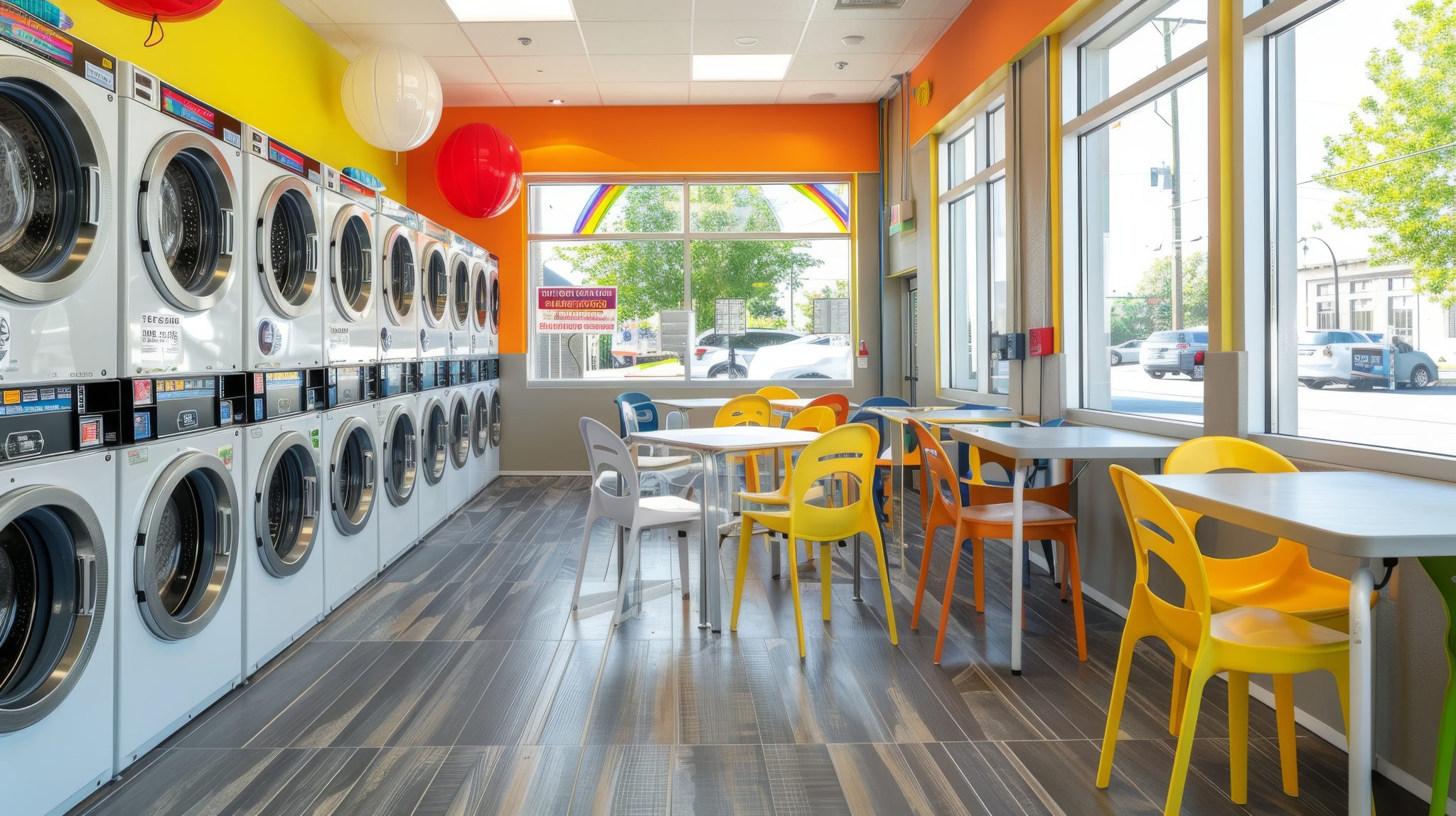Running a successful laundromat goes beyond offering clean, well-maintained machines and a comfortable environment. Security is a top priority, both for your customers and your bottom line. A safe and secure laundromat builds trust, prevents loss, and fosters customer loyalty. Below are best practices for effective surveillance, deterrence, and handling security incidents in your laundromat.
1. Creating a Comprehensive Security Plan
Before investing in technology or staff training, develop a thorough security plan that considers your facility’s unique needs:
- Risk Assessment: Identify vulnerabilities in your location (e.g., dark corners, unattended entrances, or broken locks).
- Budgeting: Determine how much you can invest in security measures. Some upgrades may be more urgent than others.
- Community and Neighborhood Context: Research recent incidents in your area and talk with nearby business owners to understand typical threats and concerns.
A well-thought-out security plan serves as your roadmap for implementing improvements without overspending or duplicating efforts.
2. Surveillance: The Foundation of Security
2.1 Security Cameras
- Camera Placement: Position cameras to cover entry points, the cash handling area, vending machines, and any “blind spots.” High-traffic areas like the doorway and payment machines should have multiple angles.
- Camera Quality: High-definition (HD) cameras provide better image clarity for identifying suspects. Ensure cameras have night vision or low-light capabilities if you operate 24/7.
- Remote Monitoring: Systems that allow remote access enable you to check live feeds or recordings from a smartphone or computer, providing peace of mind during off-hours.
- Data Storage: Consider cloud-based or network video recorder (NVR) systems. Ensure footage is stored securely, and set up backups for critical cameras.
2.2 Maintenance and Upgrades
- Regular Checks: Inspect cameras regularly to ensure they’re functional and clean (dust, dirt, or water spots can reduce clarity).
- Firmware Updates: Keep surveillance software up to date for improved performance and protection against security vulnerabilities.
- Professional Assistance: If you’re uncertain about camera selection or installation, consult a reputable security specialist who can tailor a surveillance setup to your laundromat’s size and layout.
3. Deterrence Measures: Preventing Incidents Before They Happen
3.1 Lighting
- Bright, Even Lighting: Adequate lighting inside and outside the laundromat deters criminal activity by making it difficult to hide in shadows.
- Motion Sensors: Use motion-activated lights around entrances and at the rear of the building to surprise and deter potential trespassers.
3.2 Signage and Visibility
- Warning Signs: Post signs informing patrons that the premises are under video surveillance and that crimes will be prosecuted. This often discourages would-be thieves or vandals.
- Clear Sight Lines: Keep windows and entrances unobstructed by signage or clutter. This allows people outside to see in and provides additional natural surveillance.
3.3 Physical Barriers
- Secure Doors and Windows: Invest in high-quality locks, reinforced door frames, and shatter-resistant glass where feasible.
- Anti-Theft Devices: For coin-operated machines, install high-security locks to prevent break-ins. Consider options like card-based payment systems, which reduce cash on-site.
3.4 Staff and Training
- On-Site Attendants: Having a friendly, well-trained attendant on-site during busy hours can significantly reduce theft, vandalism, and loitering.
- Customer Service: Greet customers as they enter. Criminals prefer anonymity; when staff acknowledge everyone, it can deter suspicious behavior.
- Conflict De-escalation Training: Teach employees how to handle aggressive or disruptive individuals calmly and safely, including when to call for backup or police assistance.
4. Handling Security Incidents
4.1 Incident Response Plan
- Clear Procedures: Maintain a written protocol that outlines how employees should respond to different types of incidents (e.g., theft, vandalism, unruly customers).
- Emergency Contacts: Post critical phone numbers—such as local law enforcement and emergency services—where employees can easily find them.
4.2 Documenting Incidents
- Incident Reports: Encourage staff to fill out an incident report immediately after any security-related event. Record details such as the time, location, people involved, and actions taken.
- Video Evidence: Mark and save relevant footage for easy access, in case you need to provide it to law enforcement or insurance companies later.
4.3 Coordinating with Law Enforcement
- Build Relationships: Reach out to local police to discuss your security measures. Invite them to tour your laundromat so they can offer improvement suggestions.
- Prompt Reporting: Report serious incidents to the authorities as soon as possible. Quick action can help expedite any investigation and resolve issues faster.
4.4 Insurance and Liability
- Liability Coverage: Ensure you have adequate insurance to protect against theft, vandalism, and potential liability claims.
- Insurance Requirements: Some insurance providers may require or offer discounts for specific security measures—such as installing alarms or certified locks—so confirm that your security upgrades meet their standards.
5. Continuous Improvement and Community Engagement
Security isn’t a one-time project; it’s an ongoing effort that evolves with your business. Regularly re-evaluate and update your policies, equipment, and training to stay ahead of potential threats. Work closely with neighboring businesses, community groups, and local law enforcement to share best practices and monitor emerging trends.
By investing in a robust surveillance system, implementing strategic deterrence measures, and establishing clear incident response protocols, you create a safe environment that attracts new customers and retains existing ones. The result is a more efficient, profitable, and reputable laundromat—an asset to your neighborhood and a cornerstone of your local community.








